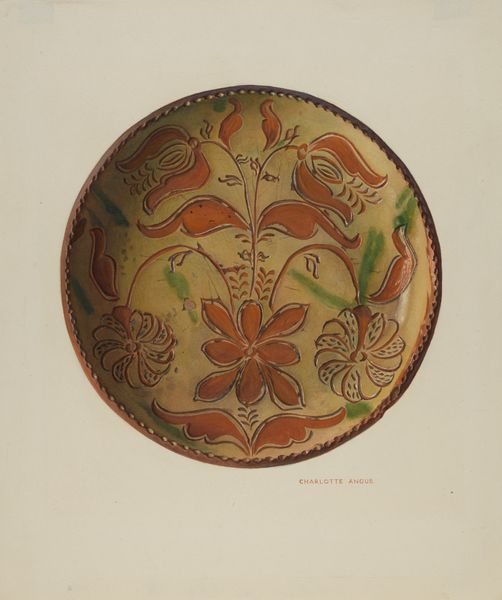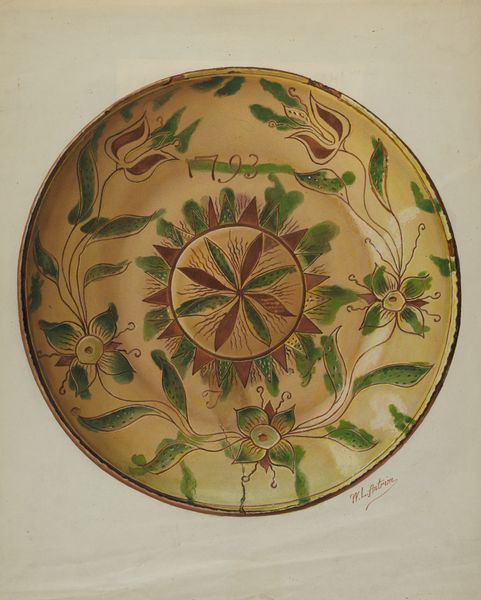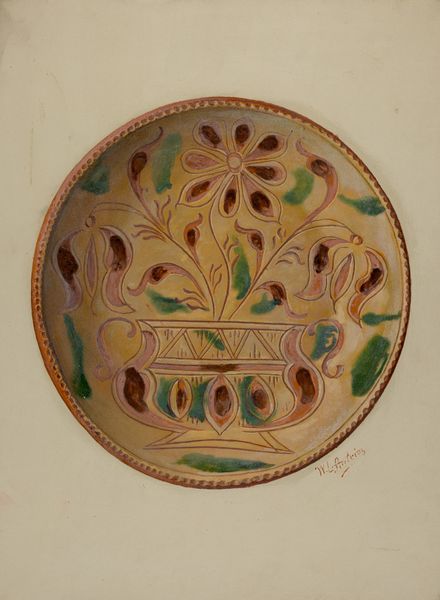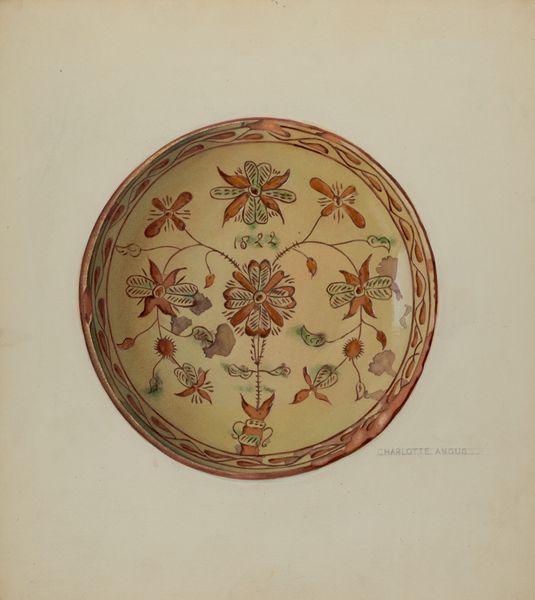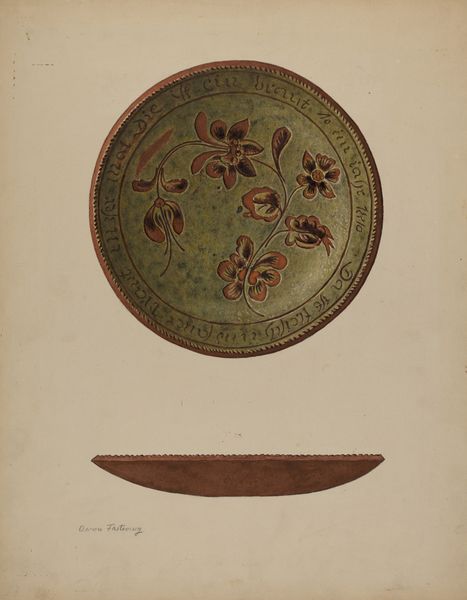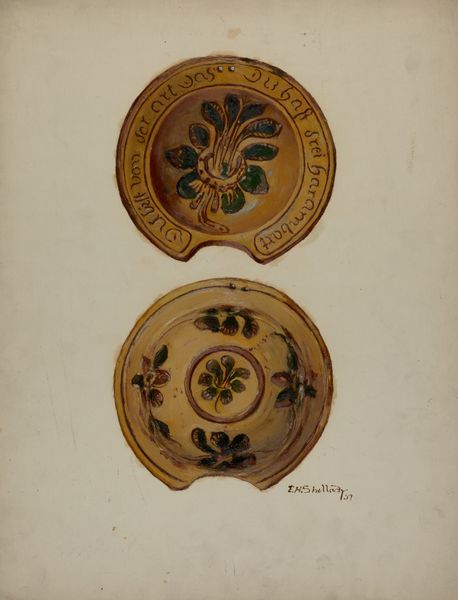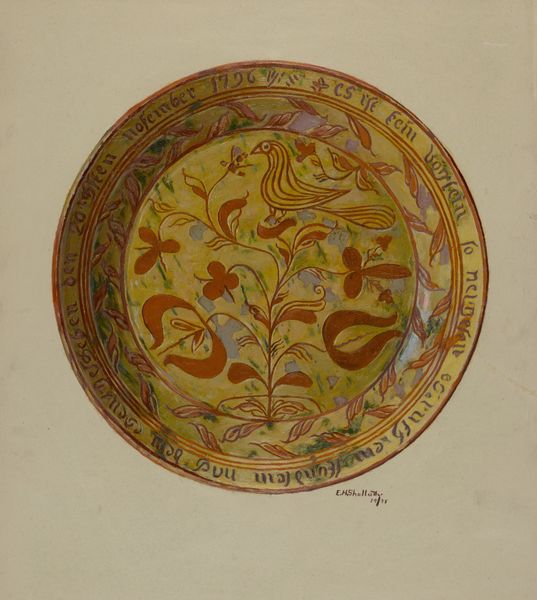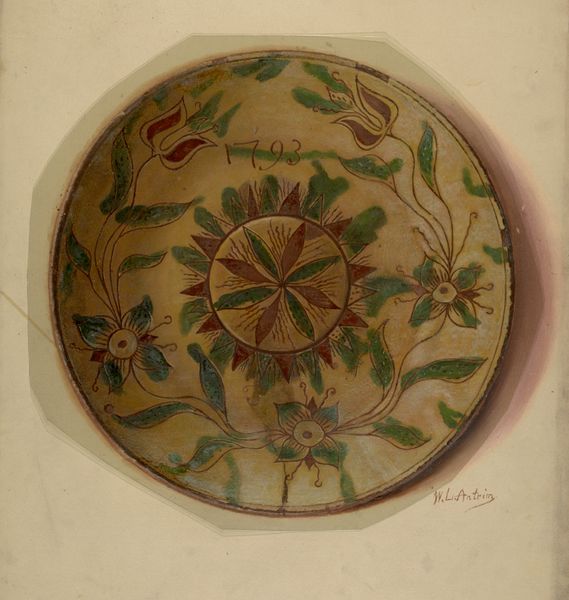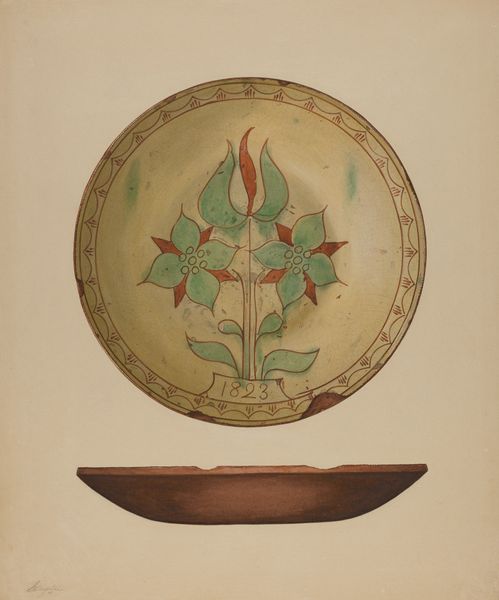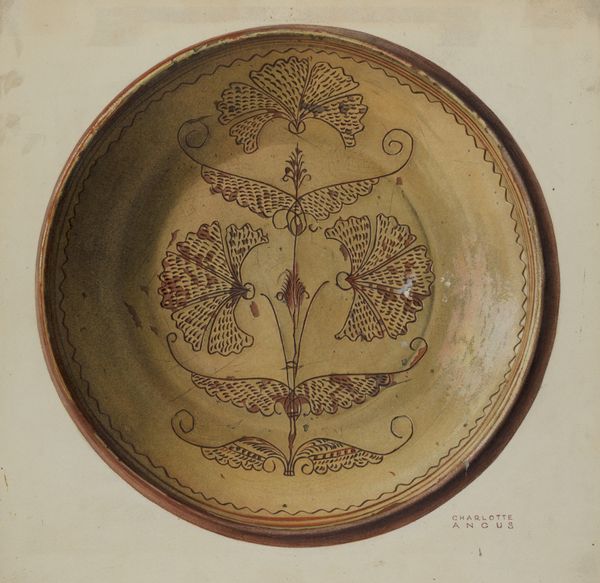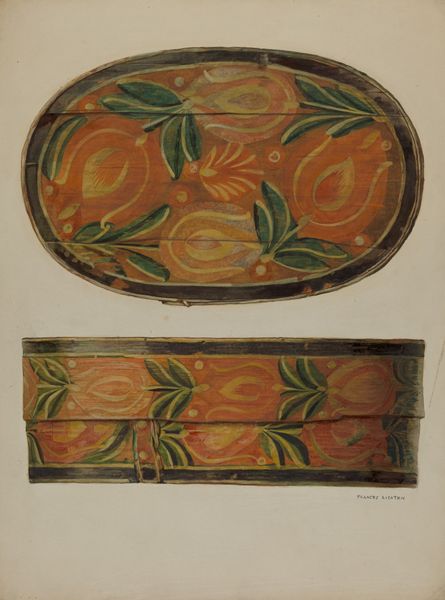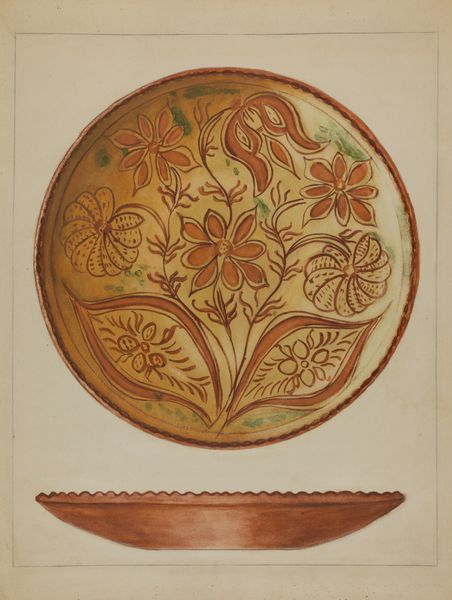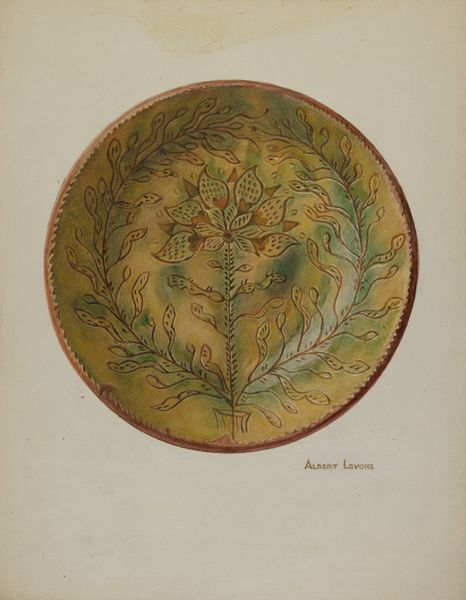
drawing, watercolor
#
drawing
#
watercolor
#
folk-art
#
geometric
#
decorative-art
#
watercolor
Dimensions: overall: 38.5 x 34.1 cm (15 3/16 x 13 7/16 in.) Original IAD Object: 13 3/8" in diameter
Copyright: National Gallery of Art: CC0 1.0
Editor: Here we have a watercolor and drawing titled "Pennsylvania German Pie Plate," created sometime between 1935 and 1942 by Elmer G. Anderson. The folk-art style with geometric motifs gives it a charming, almost handmade quality. What’s striking to me is how meticulously it replicates something utilitarian; how do you approach it? Curator: For me, this piece illuminates the complicated relationship between folk art and fine art. Anderson meticulously documented a pie plate, traditionally a functional object produced within a specific cultural context. It begs the question: what happens when you take a common object and re-present it through a medium like watercolor? Editor: So it's less about the plate itself and more about Anderson’s *rendering* of the plate. Curator: Precisely. Consider the labor involved in crafting both the original pie plate and Anderson's drawing. Both rely on specific skills and materials. What's interesting here is how Anderson's work reframes our understanding of the labor and artistic intent embedded in the original, perhaps even ‘humble,’ pie plate. Is this an attempt to preserve a dying craft? To elevate it? Editor: I see what you mean! It highlights the cultural value we place on the act of creation itself, regardless of whether it's 'high' art or a simple, useful object. Curator: Exactly. It prompts us to think critically about the systems of value within the art world, challenging the established hierarchies between "art" and "craft" through material choices and representational strategies. And by drawing it, its existence continues. Editor: That’s fascinating; it never occurred to me how much this drawing invites us to reflect on our perceptions of folk art and the labor invested in everyday objects. Thanks for making me think differently! Curator: My pleasure! It’s crucial to remember that art’s value is in how it allows us to contemplate its purpose.
Comments
No comments
Be the first to comment and join the conversation on the ultimate creative platform.
